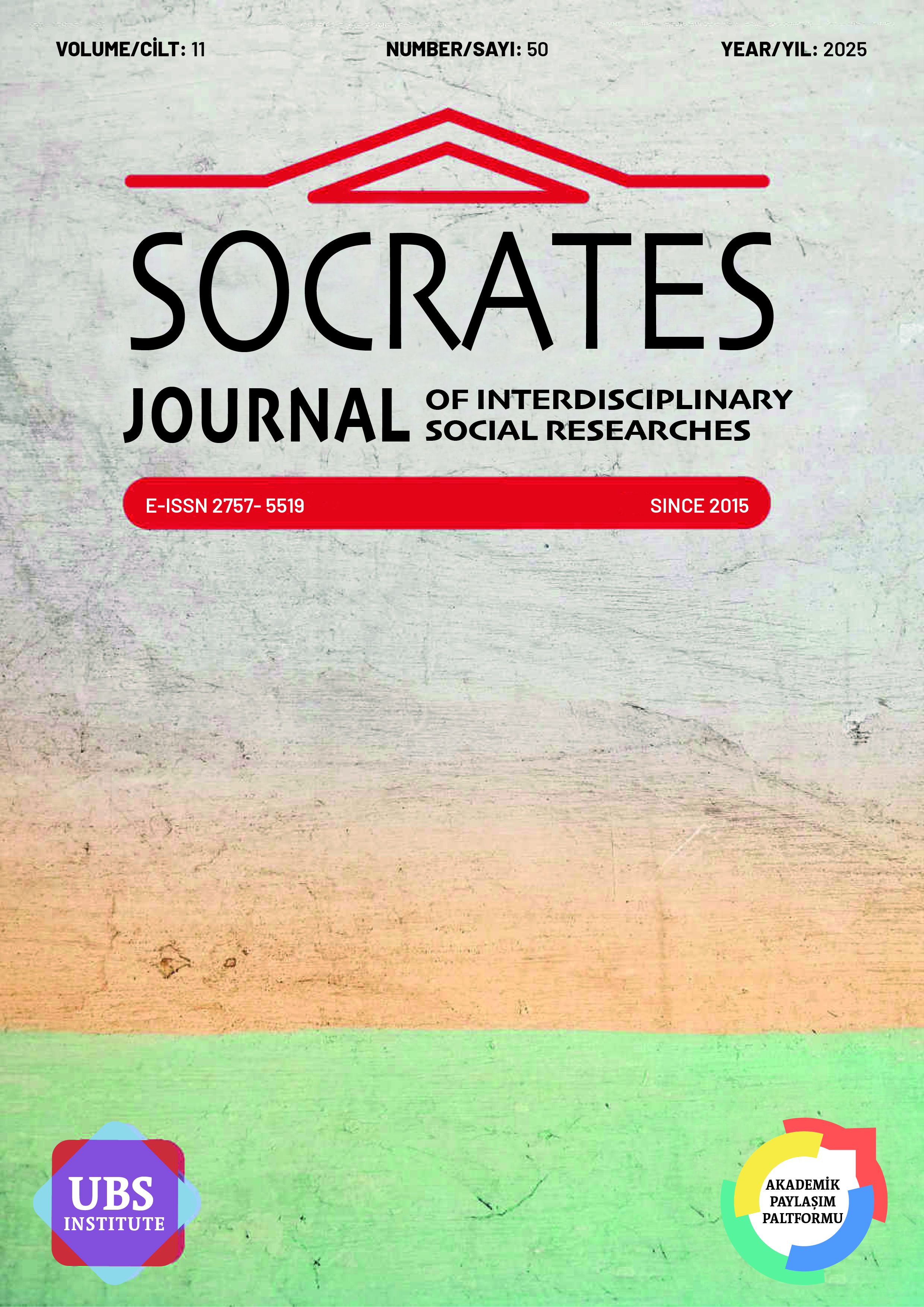INCREASING SERVICE BRAND VALUE BY APPLYING IOT TECHNOLOGY TO SMART PORT AND TERMINAL OPERATIONS IN PORT MARKETING STRATEGIES
LİMAN PAZARLAMA STRATEJİLERİNDE IOT TEKNOLOJİSİNİN AKILLI LİMAN VE TERMİNAL OPERASYONLARINA UYGULANMASIYLA HİZMET MARKA DEĞERİNİN ARTTIRILMASI
DOI:
https://doi.org/10.5281/zenodo.14845565Keywords:
Port Marketing, Strategy, IoT Technology, Smart Port, Terminal Operations, Service Brand ValueAbstract
In addition to being among the basic elements of maritime trade, ports, which have an important place in creating maritime trade demand, play an important role in the marketing strategies of the businesses they own. It addresses how the application of this technology to smart port and terminal operations can increase the service brand value by managing the port more extensively and comprehensively. The contributions of IoT technology to increasing efficiency, reducing costs and increasing customer satisfaction in port operations are examined. The research aims to reveal how IoT can be integrated into port management and provide competitive advantage. The study also aims to investigate the use of IoT in port marketing strategies and its effects on service brand value. With the spread of digitalization and automation in the sector where businesses work quickly and efficiently, port operations are becoming smarter and more efficient. IoT technologies, where physical objects can connect with each other or with larger systems, make it possible to better manage the port infrastructure of facilities at sea, from large to small, to monitor operations in real time and to optimize logistics processes.
References
Bauk, S., Schmeink, A., Colomer, J. (2016). An RFID model for improving workers’ safety at the seaport in transitional environment. Transport, 33, 353-63. https://doi.org/10.3846/16484142.1233512.
Bayoumi, E., Elgazzar, S., Obrecht, M. (2020). Investigating the impact of Internet of Things on Egyptian ports sustainability. Proc. 8th Int. Conf. Adv. Mater. Syst., INCDTP - Leather and Footwear Research Institute (ICPI), Bucharest, Romania; 263-70. https://doi.org/10.24264/icams-2020.III.3.
Belfkih, A., Duvallet, C., Sadeg, B. (2017). The Internet of Things for smart ports: Application to the port of Le Havre. Proc. IPaSPort, Normandie University, Le Havre, France:, p. 3-4.
Bıyık, C. ve Yigitcanlar T. (2020). Intelligent transport systems in Turkish urban environments: a comprehensive review. Int J Knowledge-Based Dev, 11, 382. https://doi.org/10.1504/IJKBD.2020.10037852.
Bui, V.D., & Nguyen, H.P. (2022). Role of Inland Container Depot System in Developing the Sustainable Transport System. Int J Knowledge-Based Dev, 12, 1. https://doi.org/10.1504/IJKBD.2022.10053121.
Fabian, P., Gerlici, J., Masek, J., Marton, P. (2013). Versatile, Efficient and Long Wagon for Intermodal Transport in Europe. Commun - Sci Lett Univ Zilina, 15, 118-23. https://doi.org/10.26552/com.C.2013.2.118- 123.
Ghouse, S., Peerzade, M.N., & Patil, D.S. (2022). Analyzing the Alignments of Roads by Giving Weightages to Various Factors - a Case Study, 3, 1-10.
Hoang, A.T., Pham, V.V.A. (2018). review on fuels used for marine diesel engines. J Mech Eng Res Dev, 41, 22-32.
Hummels, D. (2007). Transportation Costs and International Trade in the Second Era of Globalization. J Econ Perspect, 21, 131-54. https://doi.org/10.1257/jep.2f3.131.
Jovic, M., Filipovic, M., Tijan, E., Jardas, M.A. (2019). Review of Blockchain Technology Implementation in Shipping Industry. Pomorstvo, 33, 140-8. https://doi.org/10.31217/p.33.2.3.
Kalajdzic, M., Vasilev, M., Momcilovic, N. (2022). Evaluating an Inland Waterway Cargo Vessel’s Energy Efficiency Indices. Polish Marit Res, 29, 27-34.
Kanifolskyi, O. (2022). General Strength, Energy Efficiency (EEDI), and Energy Wave Criterion (EWC) of Deadrise Hulls for Transitional Mode. Polish Marit Res, 29, 4-10.
Liang, M., Chen, M. (2022). Monitoring the Performance of a Ship’s Main Engine Based on Big Data Technology. Polish Marit Res, 29, 128-40.
Luong, T., Van, Thuan, P. Van, Giang, H.H., Nam, L.T. (2022). Evaluation Model the Risk of Collision Between Two Target Ships in Pollution Management Strategy in Coastal Waters. Int J Knowledge-Based Dev, 12, 1. https://doi.org/10.1504/IJKBD.2022.10052994.
Masek, J., Kolarovszki, P., Camaj, J. (2016). Application of RFID Technology in Railway Transport Services and Logistics Chains. Procedia Eng, 134, 231-6. https://doi.org/10.1016Zj.proeng.2016.01.064.
Nguyen, H.P., Hoang, A.T., Nizetic, S., Nguyen, X.P., Le A.T., Luong, C.N., et al. (2021). The electric propulsion system as a green solution for management strategy of CO2 emission in ocean shipping: A comprehensive review. Int Trans Electr Energy Syst, 31:e12580. https://doi.org/10.1002/2050-7038.12580.
Nguyen, H.P., Pham, N.D.K., Bui, V.D. (2022). Technical-Environmental Assessment of Energy Management Systems in Smart Ports. Int J Renew Energy Dev, 1, 889-901. https://doi.org/10.14710/ijred.2022.46300.
Pham, V.V., & Hoang, A.T. (2019). Technological Perspective for Reducing Emissions from Marine Engines. Int J Adv Sci Eng Inf Technol, 9, 1989. https://doi.org/10.18517/ijaseit.9.6.10429.
Phan, V.H., Dang, Q.V., Le T.D. (2022). Optimal Weather Routing Based on Adaptive Bacteria Foraging Lgorithm for Vessel. J Technol Innov, 2, 16-9. https://doi.org/10.26480/jtin.01.2022.16.19.
Philipp, R. (2020). Blockchain for LBG Maritime Energy Contracting and
Rey, A., Panetti, E., Maglio, R., & Ferretti, M. (2020). Determinants in adopting the Internet of Things in the transport and logistics industry. J Bus Res, 131, 584-90. https://doi.org/10.1016/jjbusres.2020.12.049
Tichavska, M., Cabrera, F., Tovar, B., & Arana V. (2015). Use of the Automatic Identification System in Academic Research. In: Moreno-Diaz R, Pichler F, Quesada-Arencibia A, editors. Comput. Aided Syst. Theory -EUROCAST 2015, Springer, 33-40. https://doi.org/10.1007/978-3-319-27340-2_5.
Yalama, V., Yakovleva, O., Trandafilov, V., & Khmelniuk, M. (2022). Future Sustainable Maritime Sector: Energy Efficiency Improvement and Environmental Impact Reduction for Fishing Carriers Older than 20 Years in the Fleet Part II. Polish Marit Res, 29, 78-88.
Yan, X., Song, H., Peng, Z., Kong, H., Cheng, Y., & Han L. (2021). Review of Research Results Concerning the Modelling of Shipping Noise. Polish Marit Res, 28, 102-15. https://doi.org/10.2478/pomr-2021-0027.
Zelazny, K. (2015). An Approximate Method for Calculation of Mean Statistical Value of Ship Service Speed on a Given Shipping Line, Useful in Preliminary Design Stage. Polish Marit Res, 22, 28-35. https://doi.org/10.1515/pomr-2015-0005.
Zienkiewicz, M.H., & Czaplewski, K. (2017). Application of Square M split Estimation in Determination of Vessel Position in Coastal Shipping. Polish Marit Res, 24, 3-12. https://doi.org/10.1515/pomr-2017-0044.
Downloads
Published
How to Cite
Issue
Section
License
Copyright (c) 2025 Socrates Journal of Interdisciplinary Social Studies

This work is licensed under a Creative Commons Attribution 4.0 International License.


